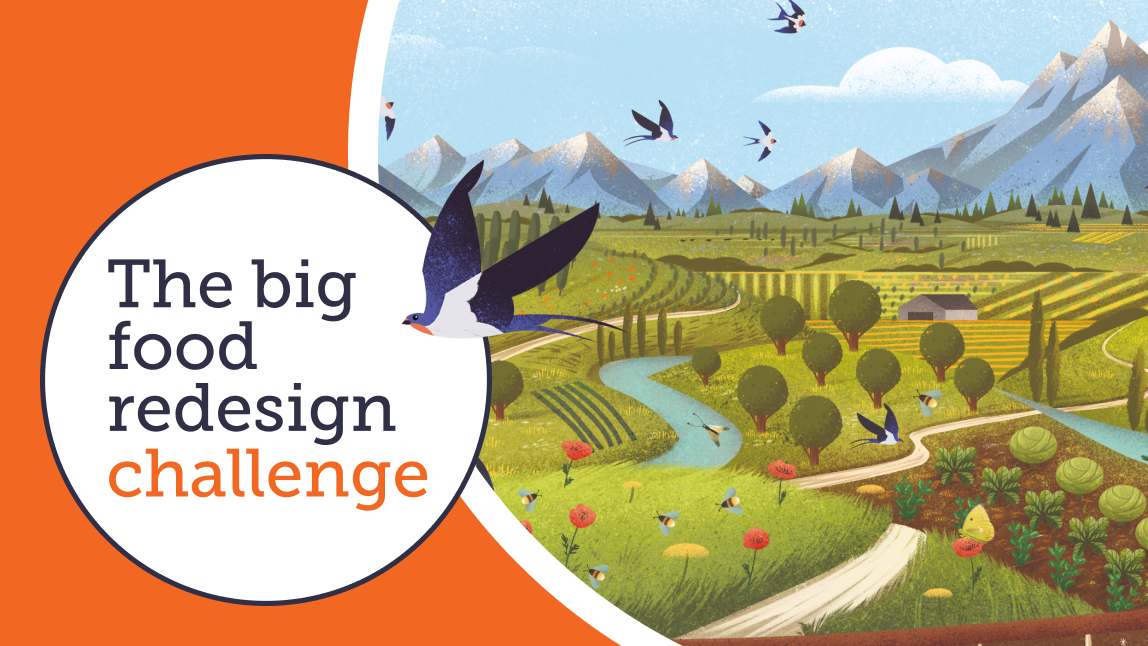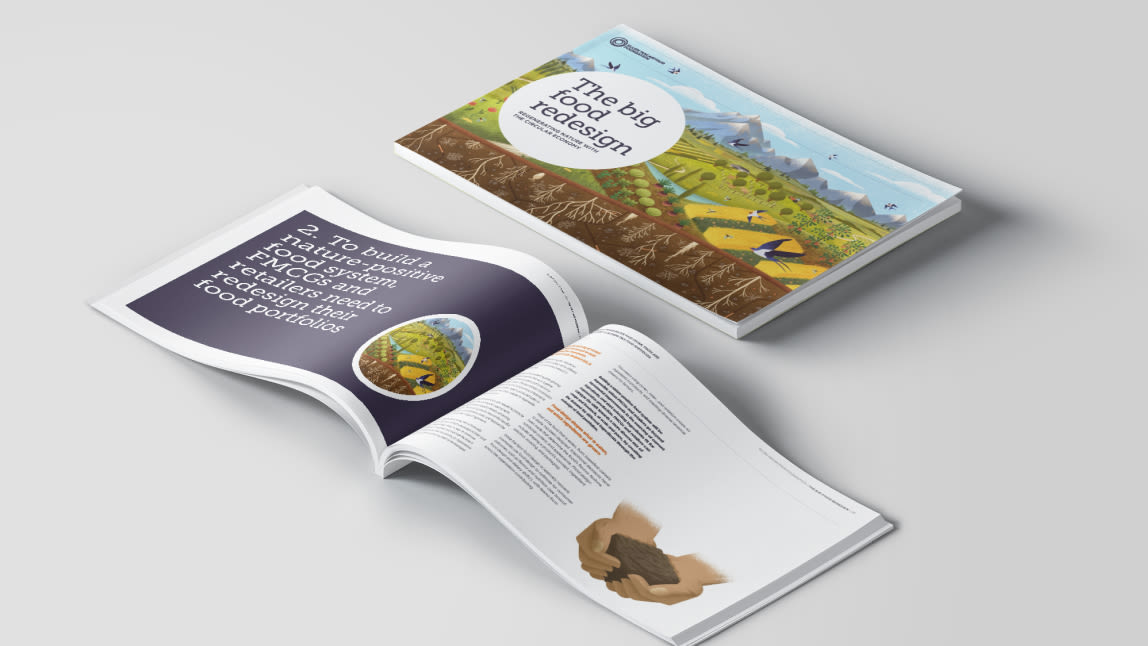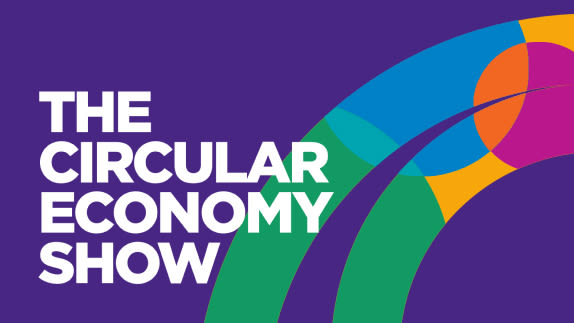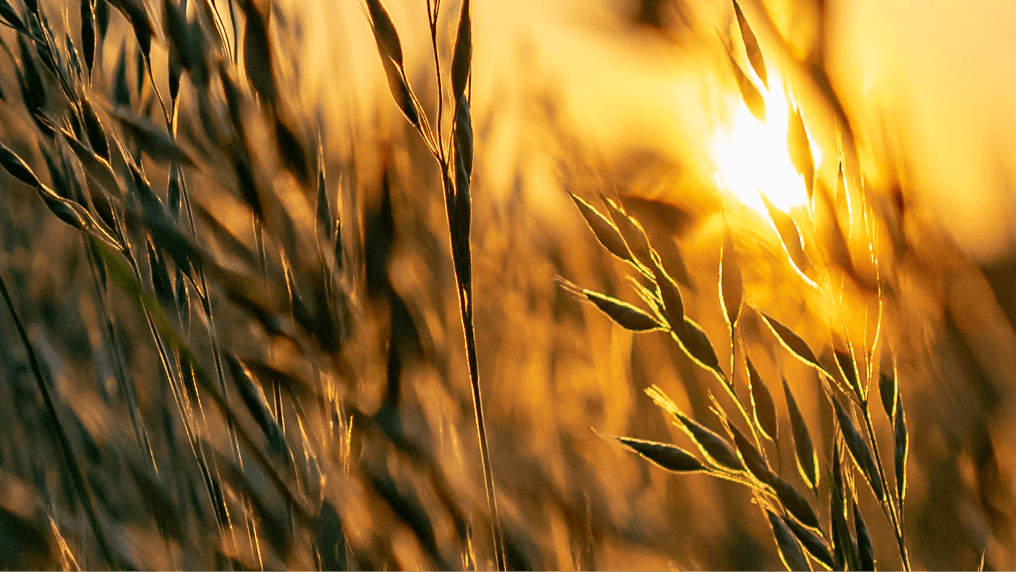Welcome to the first episode of our new series looking at the need to redesign our food system.
In the episode, we look at what’s wrong with the current system, and learn how a circular economy for food can help address some of today’s biggest global issues, such as biodiversity loss and climate change.
We’re joined by the Ellen MacArthur Foundation’s Food Lead, Reniera O'Donnell, Ecology, Social, Governance Advisor, Dr Catherine Chong and we’ll also hear from Climate Farmers Co-Founder Philippe Birker.
This episode was supported by players of People’s Postcode Lottery.
Transcript
Catherine Chong
Growing [up] in a farm in Malaysia, in the 80s. Collectively, for all of the small scale farmers, we were encouraged to go into the intensive system whereby you either go for palm plantation, or in my dad's case, he was persuaded to join the machinery of poultry intensive poultry farming. For me, my experience, my memory, as a very young child was that almost overnight I was learning English by reading the labels of the agrichemical bottles that my dad was asked to buy.
Pippa Shawley
For Catherine Chong, industrialised farming changed her family's farm, from one abundant in biodiversity and wildlife, growing over 30 types of fruit, raising chickens and livestock, to an industrialised one of multistory chicken barns and agrichemicals that was dependent on loans. Her family's neighbours were persuaded to do the same.
Catherine Chong
It was when I was going to university that, over the course of a couple of weeks, all of the poultry, all of the chickens died in our farm. And we became... my dad had to liquidate the farm, declare bankruptcy. And we became very, very poor, literally in the course of few weeks, and certainly if I did not have the scholarship to go to university, then I would struggle to see how we could have escaped that lifelong of, of poverty, of destitute that was the reality that we were presented with.
Pippa Shawley
Catherine's story is just one example of how our current food system is broken. But this is not a podcast about the problems of industrialised farming and mono crops. It's about creating a better system. Welcome to the Circular Economy Show Podcast. I'm Pippa Shawley. And over the next five episodes, I'll be speaking to people across the global food industry, about why our current methods of food production need to change and what the solutions are. We'll hear from farmers, supermarkets, policymakers and food producers to learn how we can make food that helps people and nature thrive. Let's start by hearing from Reniera O'Donnell, Food Lead here at the Ellen MacArthur Foundation.
Reniera O'Donnell
We have an incredibly efficient food system. It is highly industrialised, it is it has been designed to grow to feed a rapidly growing population across the globe. We can access all sorts of things at all times of the year. It's quite extractive, it is highly reliant on external inputs, such as synthetic fertilisers, pesticides and herbicides. So we've got a very efficient, highly industrialised, reliant on sort of single crop farming, food system.
Pippa Shawley
As we know from Catherine's story, while this approach can generate high yields in the short term, it comes at a great cost. As Reniera explains.
Reniera O'Donnell
We know that globally, the way that we produce and consume food is responsible for third - a third of greenhouse gas emissions.
Pippa Shawley
That's a lot
Reniera O'Donnell
It's a lot, and also for about half of human-induced biodiversity loss, which again, you know, that's a massive impact on our natural environment. And so while the system is incredibly efficient at feeding a growing population, it is really not very effective at keeping our planet and our soils and our and our biodiversity healthy enough to continue feeding us in the long run. So it's a very extractive system. You know, it's very polluting, very degrading to landscapes, we're seeing natural ecosystems being taken out, so deforestation, for example, to make way for huge tracts of mono crop for cattle farming or for soy farming around the world. And so, I'll say that again, you know, we've got an incredibly efficient system, but it is not effective.
Pippa Shawley
This intensive farming system has resulted in a race to the bottom, where we are demanding greater volumes at lower prices. And it's not just farming. Our entire food system has been designed to sell a huge number of products. I asked Reniera to explain what we mean by 'design' here.
Reniera O'Donnell
I don't know about you, but I plan to plant vegetables in my garden every year. And I go off to the local garden shop and I look at all the seeds and I have a choice in front of me. I can plant F1 carrots that are orange, I can plant another variety that might be yellow. Or I can choose a packet of heritage carrots which come out in purple, yellow, white, and orange. That is a design decision. And those sorts of design decisions are being made by every grower, every food manufacturer, every chocolate bar, box of cereal, that is made, somebody somewhere is making a design decision on what it tastes like, what ingredients go into it, where do those ingredients get sourced from, and I guess importantly for this conversation, the systems in which those ingredients are grown.
Pippa Shawley
At the beginning of this episode, we heard from Catherine Chong, who grew up on her family's farm in Malaysia and saw at firsthand the devastating impact of industrialised farming on her own family and local area. After coming to the UK as a student, she now works as an ecology, social and governance advisor, helping companies, investors and governments link corporate decisions to social and ecological impacts. She argues that our current food system is a failure of design.
Catherine Chong
Our food production is not designed by farmers and not designed for farmers, and many would argue is not designed for to meet the SDG goal of reducing hunger, of providing us with the basic level of nutrition. And so who are who are the people that are designing our food system? And when we look at that, and then we look at, we have to look at who's dictating the price, who's dictating what is being produced, how it is produced, which then feed on to the limited choice that, not just farmers, but producers along the supply chain, have. It forms a type of constraint whereby if I look at what I can buy, in order to make the food that I want to make, you know, say I'm a baker, it's all so well, to say that I want to use grain that is produced in a way that's in harmony with nature, but are they available? And if we look at the way that we've been shopping, the places where we're able to shop, and then what is put forward in front of us, I think many would argue that... would argue against this myth that it is the market that decides, it is the people, it is the consumer that decides what gets grown. I argue that in many instances, in many parts of the world, it is the large manufacturers, the large retailers, that tend to dictate what should be produced and at what price. And that is not to say that that is intrinsically wrong. But it does say that the decision making is not democratic decision making, it's not equitable. And it does not always translate to a definitely with an awareness of the environmental and social impact, but rather on who can get hold of what at the cheapest costs, to make sure that maximising shareholders is the immediate concern.
Pippa Shawley
So if the current system has been designed, can we design a better one? In 2021, the Ellen MacArthur Foundation launched the Big Food Redesign, offering a framework for circular design for food using the principles of a circular economy. Reniera unpacks what that looks like when we think about ingredients.
Reniera O'Donnell
The framework really has four different parts to it. So underlying all of this is this need to move away from this kind of linear extractive farming model, and to look to models of farming that regenerate soil health, that regenerate biodiversity, that bring back water quality and don't disturb air quality. So really thinking about how do we enable produce to be grown, and that's both crops and livestock. How do we enable produce to be grown in systems that are regenerative, so we're looking at regeneratively produced ingredients. The second opportunity, we call them design opportunities, is thinking about diverse ingredients. So we know that today 60% of the calories that we consume come from four crops.
Pippa Shawley
Wow.
Reniera O'Donnell
Four crops. That's it. And so we know that for nature to thrive, diversity is absolutely key. If you look at natural ecosystems, they're full of lots and lots of different types of plants or different varieties of plants. And so diversification of ingredients is one of the key ways in which we think that you can... you can instil that as a design decision. So you might think... think about potatoes for example, when you go into the supermarket and, don't know about you, but you're faced with, I don't know, five or six different kinds of, essentially, white potatoes, occasionally you might get a Red Rooster. They're really exciting. They roast very well. But out there, there are about 4,500 varieties of potatoes. So if we think about how many potatoes are produced globally, if we could introduce some diversification into those, think about the resilience that it would bring back into natural landscapes and the variety and the diversity that we would be able to be able to have. So diversifying ingredients is a really key part of the framework.
Pippa Shawley
So we've heard about the need for a food system underpinned by regenerative agriculture and production, and why we should use diverse ingredients. Next, Reniera sets out the opportunities around lower impact and upcycled ingredients.
Reniera O'Donnell
Another part of the framework is around lower impact ingredients. So we hear a lot today around the kind of quick wins in moving from animal-based proteins into plant-based proteins. Eat less meat, eat better quality meat, eat more plants. And absolutely, that is part of the lower impact opportunity here. But we also need to think about looking at the different impact plants have on the land. So a classic example would be, and I think we put this in, you know, in the report that we had, like, let's take a wheat-based cereal, my children live off wheat-based cereals, so I know them very well. But if you swapped out some of that wheat flour and introduced a legume-based flour, so for example, a green pea flour, you could ask your farmers to be planting 60% wheat, 40% peas, intercropped with each other, which would then enable the peas to lock nitrogen in the soil, meaning the farmer didn't have to use external inputs for fertiliser. So you are lowering the impact that those plants have on the landscape. So really thinking about the types of plants and the impact that they have on the landscape in which they are being grown. And some of that might actually be as simple as growing the right plant in the right geography. And that would lower the impact.
Reniera O'Donnell
The last opportunity is about upcycled ingredients. Now. You know, eliminating waste is one of the key principles of the circular economy. And we hear a lot again around eliminating food loss and waste, but a lot of that is around once the food product has left the farm and it's been made into something else. So we think about the supermarkets who are redistributing surplus food, we think about surplus food in the food production system and how that is used by other by other organisations. But there's a... we haven't really focused on what we call, kind of, on farm crop residue, so the residue that is left from the growing process, or inedible crop residue, so you think about all your banana peels, and your orange peels and, and things like that. And, you know, there is a real opportunity to provide more value for farmers in being able to valorise their crop residues, but also to be able to use those crop residues for ingredients which mean that then land can be not used for farming. And a really great example of that is currently every year there's about 2.8 billion tonnes worth of crop residue, which is like massive, right? And if we use less than 1.5% of that and we took the sugars out of it, so we extracted sucrose, we could make glucose syrup, and that would cover the global requirement for glucose syrup, meaning that actually, you know a huge tracts of land would not have to be planted for sugar cane, sugar beet, or corn for corn syrup, to be able to produce glucose syrup. So again, thinking about how we can make best use, both financially and from a land perspective, of what is currently not being seen as either edible... or that is currently being seen as waste.
Pippa Shawley
So a circular design for food is a framework that enables us to put nature at the heart of decisions, applying circular economy principles to every choice, from product concepts to packaging, to ingredient sourcing and selection. As Reniera says, it uses ingredients that are diverse, low impact and upcycled, all underpinned by regenerative production. 'Regenerative' is a bit of a buzzword at the moment. But what does it mean? Philippe Birker, Co-Founder of Climate Farmers, an organisation working to scale regenerative agriculture in Europe, and Catherine Chong, talked me through regenerative agriculture and regenerative production.
Philippe Birker
For me, it's a very simple one. Regenerative agriculture is, for me, agriculture which regenerates the soil health. That's it. Like essentially, it's just... I always say, it's just the mindset shift from a focus on yield to focus on soil health. If you are increasing your soil health, then you are regenerating your local ecosystem inadvertently.
Catherine Chong
So yes, regenerative productions, I think it encourages us to look at the whole food system as a whole and also in its component parts, such that when we look at the interactions of the activities relating to production with people and nature, we are able to hit the nail on the head, so to speak, when addressing the impacts of depleting natural resources and climate change, such as mitigation strategies. And that means that we look at the food production system, consisting of agricultural practices - that is what happens at farm gate, alongside forestry and other land use change. And also pre-gate activities, such as fertiliser manufacturing, and post-farm gates such as processing, packaging, retailing, and the waste that goes along the whole production chain.
Pippa Shawley
We'll hear more about regenerative farming from Philippe in next week's episode. But other than farmers, who do we need to get on board to change the system? Reniera says there's no silver bullet.
Reniera O'Donnell
I think, you know, all the players along the food value chain have got a huge role to play. Now our research shows that in the EU and the UK, the top 10 fast-moving consumer goods companies and retailers have influence over 40% of the agricultural land within those geographies. So if you think about, then, the influence that those big companies, big food companies and retailers have, and if they all included circular design for food, and how they designed products, and therefore how they sourced ingredients, the impact that that could have on the landscape would be massive. But they can't do that without having farmers who have the knowledge, the equipment and the finances to be able to actually produce ingredients in a more regenerative way. And that then starts to link back to, Okay, well, how are we going to maybe repurpose subsidies so that we're actually pushing public money into supporting a more regenerative approach to how we grow and produce our food. And then there's the small innovators along the way, there's all the, you know, the supply chain. So I think it's really hard to say that there is a single bullet. I think, you know, EMF, we're all about systems. And this is one classic case where unless the whole system moves and works together, we are not going to see the scale of change that we know that our soil and our biodiversity needs.
Pippa Shawley
We've heard in this episode how our current food system is eroding soil health, damaging ecosystems, and contributing to the pressing global challenges of biodiversity loss and climate change. However, we've also heard that through better design, and by applying circular economy principles in this sector, we can create a food system that regenerates nature, while still generating enough abundance to feed an ever growing global population that's expected to grow to 10 billion by 2057.
Pippa Shawley
Over the next four episodes, we'll explore the role farmers, businesses and policymakers play in creating a circular economy for food and meet those already working to make it happen.
Pippa Shawley
Join us next week when we'll hear more from Philippe Birker and I'll be visiting a farm using regenerative methods here in the UK.
Pippa Shawley
This episode was supported by players of People's Postcode Lottery. Find out more about our food work in the show notes. This podcast is published by the Ellen MacArthur Foundation and produced by Skinny Mammoth Media. Thanks to our contributors Catherine Chong and Philippe Birker.






